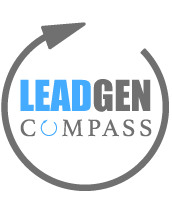Utilizing User and Search Intent
When marketing to prospects online, there are two basic ways to target people. One is via demographics, which we define as the statistical data as it relates the population in general or particular groups in that population. Think of age, income, or gender or some other unit of information we can apply to the group in question. The other way to target is via intent, which we define as data relating to what a user intended or wanted based on what they type into a search engine. Think of a user typing “hammocks” into a search engine as an indicator that they are interested in learning more about or purchasing a hammock.
The latter is what we use for search engine marketing. At LeadGen Compass, we’re able to use intent to figure out where your prospects are in their decision process, and then market to them accordingly.
While that may sound like a tall order, having that goal in mind, content matched exactly to where it’s helpful to your prospects in their decision process, is what we’re striving for. So how do we get there?
How we do we market to prospects online
We place ads on the search engines. Google, Bing and Yahoo make up nearly all of the search engine activity and that’s where we focus your marketing dollar. Not only will we help you figure out the most cost effective way to get your name in front of likely prospects that are searching, we’ll take that knowledge and apply it to the content you’re producing for your website. We know this works because having worked with multiple companies in various industries, one aspect of communication that jumps out to us is that the more a company knows about a product or service, the more likely their language is going to be peppered with jargon and the less likely it is that new prospects will use that language. Where we can find what actual search engine users in your market are searching for, the closer we are to identifying and nurturing early stage leads.
What you can do today
If your tasked with doing this on your own, we have a couple of hints that will help you get more from your search engine marketing efforts.
First, map your sales cycle. Every company has a slightly different sales cycle, and more important, has a slightly different line between each stage in the sales cycle. For your organization, spend some time getting agreement on the terms you’ll use internally for each stage in your sales cycle. Then spend time coming up with examples of sales activity that is in the gray area between one stage and the next. For instance, when is a client moved from an unqualified suspect to a qualified prospect? If I’m talking to a company, but not talking to a decision maker or even a decision influencer, but they confirm the company to be a good fit, are they are suspect? What about if I’m talking to a definite decision maker by title, but there has been no clear indication that they can use your product? Invest some time in defining those scenarios because it will define what your people need to accomplish in that stage of the sales cycle.
Second, map your customer’s decision process. Just as every company has a slightly different sales cycle, each organization has a slightly different way they go about making a decision about products like yours. The more you know about their decision process, the easier it is to map it to your sales cycle, and identify the kinds of information that will be helpful to your customer making a good decision. In the end, that’s what we want, right? We want to help them make a good decision, ideally one that involves us.
To map your customer’s decision process, you need to get in front of them and ask them to describe how the decision was made. The easiest ones to do this with are your recent customers because they just finished the process. Asking them to recollect how they got to where they are will identify key steps in your customer’s decision process. Each customer is unique, but after a few conversations you’ll get a sense of how they identified the problem or result that needed to be solved, how they researched solutions, how they narrowed the choices and how they finalized the decision. You were probably involved in the last stages, but we find that where we add the most value is in the early stages.
The get the most from your search engine marketing efforts, it helps to figure out where your customers turn to the search engines in their decision process. Once you know that, you can be there for them. The advantage to search engine marketing, the reason Google is so big, is because you can market to the user’s intent and put yourself in their decision path. With a little planning and research coupled with testing and measuring, you can turn search engine marketing into a cost effective tool for your company’s lead generation efforts.
LeadGen Compass is here to help you with your SEO content marketing – utilizing user and search intent / search engine marketing efforts.



